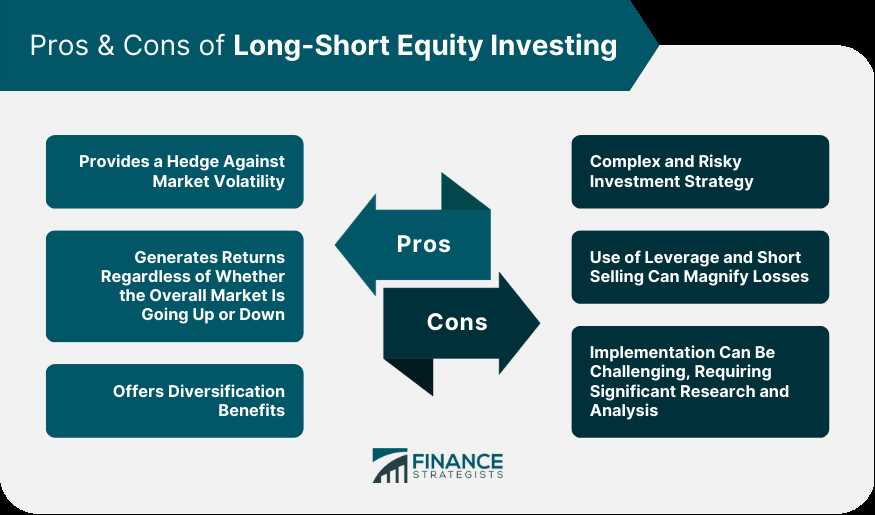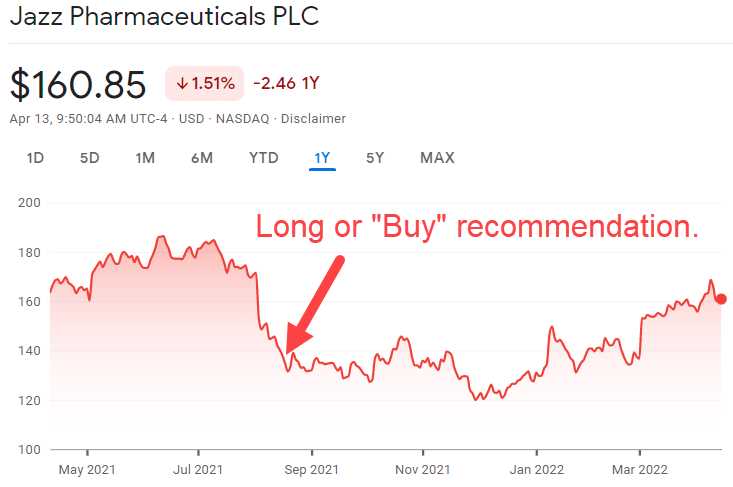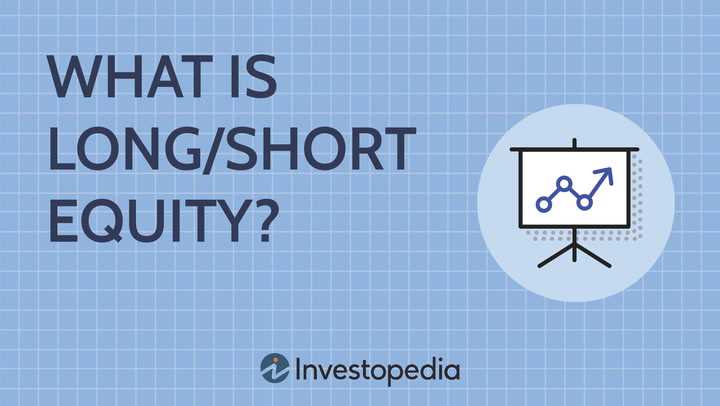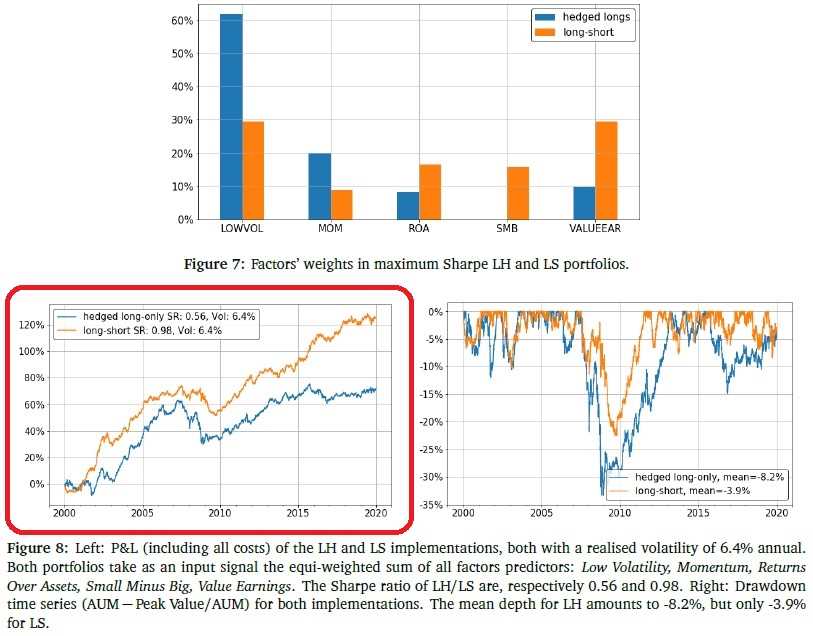Long-Short Equity Investing Strategy: Explained and Analyzed

Long-short equity investing is a popular investment strategy that involves taking both long and short positions in stocks. This strategy aims to generate returns by exploiting the price differences between long and short positions.
In a long-short equity strategy, an investor takes a long position in stocks that are expected to increase in value and a short position in stocks that are expected to decrease in value. By going long on certain stocks and short on others, the investor aims to profit from the relative performance of these stocks.
The long positions are typically taken in stocks that the investor believes will outperform the market or a specific sector. These stocks are expected to increase in value, resulting in capital gains for the investor. On the other hand, the short positions are taken in stocks that the investor believes will underperform the market or a specific sector. These stocks are expected to decrease in value, resulting in capital gains for the investor.
Benefits of Long-Short Equity Investing
One of the key benefits of long-short equity investing is its ability to generate positive returns in both rising and falling markets. This strategy allows investors to profit from both upward and downward price movements, making it a versatile investment approach.
Another benefit of long-short equity investing is its potential for risk reduction. By taking both long and short positions, investors can hedge their bets and mitigate the impact of market volatility. This can help protect their portfolio from significant losses during market downturns.
Analyzing Long-Short Equity Investing Strategy
When analyzing a long-short equity investing strategy, investors typically look at various factors such as historical performance, risk-adjusted returns, and correlation with other asset classes. They also consider the investment manager’s track record, investment process, and risk management techniques.
It is important for investors to carefully analyze the underlying stocks in the long and short positions. Factors such as company fundamentals, industry trends, and market conditions should be taken into account to assess the potential for future returns.
Implementing Long-Short Equity Investing Strategy

Implementing a long-short equity investing strategy can be done through various methods, including actively managed funds, exchange-traded funds (ETFs), and individual stock selection. Investors can choose the approach that best suits their investment goals, risk tolerance, and time horizon.
It is important for investors to have a clear investment plan and to regularly monitor and adjust their positions. This strategy requires active management and ongoing analysis to ensure that the long and short positions are aligned with the investor’s objectives.
| Pros | Cons |
|---|---|
| Ability to generate returns in both rising and falling markets | Requires active management and ongoing analysis |
| Potential for risk reduction through hedging | |
| Flexibility to take advantage of market inefficiencies | Potential for losses if the market moves against the positions |
Long-short equity investing is a popular investment strategy that involves taking both long and short positions in stocks. This strategy aims to generate returns by identifying undervalued stocks to buy (long positions) and overvalued stocks to sell (short positions).
The basic concept behind long-short equity investing is to take advantage of market inefficiencies. By going long on stocks that are expected to increase in value and shorting stocks that are expected to decrease in value, investors can potentially profit from both rising and falling markets.
Long positions are taken on stocks that are believed to have strong growth potential. These stocks are typically undervalued or have positive catalysts that can drive their prices higher. Investors who take long positions expect the value of these stocks to increase over time, allowing them to sell at a higher price and make a profit.
On the other hand, short positions are taken on stocks that are believed to be overvalued or have negative catalysts that can drive their prices lower. Investors who take short positions borrow shares from a broker and sell them in the open market, with the intention of buying them back at a lower price in the future. If the price of the stock does indeed decrease, investors can buy back the shares at a lower price and return them to the broker, pocketing the difference as profit.
One of the key advantages of long-short equity investing is its ability to generate positive returns in both bull and bear markets. While traditional long-only strategies rely on the overall market direction to generate profits, long-short equity strategies can profit from individual stock performance. This makes it a potentially attractive strategy for investors who want to diversify their portfolios and reduce their exposure to market volatility.
Benefits of Long-Short Equity Investing
Long-short equity investing is a popular investment strategy that aims to generate returns by taking long positions in stocks expected to increase in value and short positions in stocks expected to decrease in value. This strategy offers several benefits to investors:
1. Diversification
One of the key benefits of long-short equity investing is diversification. By taking both long and short positions, investors can spread their risk across different stocks and sectors. This helps to reduce the impact of individual stock or sector-specific events on the overall portfolio. Diversification can also help to smooth out returns and reduce volatility.
2. Potential for Positive Returns in Any Market Environment
3. Risk Management
Long-short equity investing provides investors with the ability to manage risk more effectively. By taking short positions, investors can hedge against market downturns and potentially offset losses from long positions. This can help to protect the portfolio during periods of market volatility or economic uncertainty.
4. Alpha Generation

Long-short equity investing can also provide opportunities for alpha generation. Alpha refers to the excess return generated by an investment strategy above the return of a benchmark index. By carefully selecting long and short positions based on fundamental analysis and market research, investors can potentially generate alpha and outperform the market.
5. Flexibility and Active Management
Long-short equity investing offers flexibility and active management. Unlike traditional long-only strategies, long-short equity investors have the ability to take both long and short positions, allowing them to take advantage of market inefficiencies and mispricings. This active management approach can lead to better risk-adjusted returns and the potential for higher overall portfolio performance.
Analyzing Long-Short Equity Investing Strategy
Long-short equity investing is a popular strategy used by investors to potentially generate returns in both rising and falling markets. This strategy involves taking long positions in stocks expected to increase in value and short positions in stocks expected to decrease in value.
One of the key advantages of long-short equity investing is its ability to provide investors with a hedge against market downturns. By simultaneously holding long and short positions, investors can potentially profit from both upward and downward movements in the market.
How it Works
Long-short equity investing typically involves a two-step process: stock selection and portfolio construction.
Portfolio Construction: Once the stocks are selected, the investor constructs a portfolio by allocating capital to the long and short positions. The allocation can be based on factors such as risk appetite, expected returns, and diversification goals. The goal is to create a balanced portfolio that can potentially generate positive returns regardless of market direction.
Risks and Challenges
While long-short equity investing can offer potential benefits, it also comes with its own set of risks and challenges.
Market Risk: As with any investment strategy, long-short equity investing is exposed to market risk. If the overall market experiences a downturn, both long and short positions may be negatively affected.
Stock Selection Risk: The success of the strategy heavily relies on the accuracy of stock selection. If the investor makes incorrect predictions about the performance of individual stocks, it can lead to losses.
Liquidity Risk: Short-selling stocks can be challenging if the stock is illiquid or hard to borrow. This can limit the ability to establish short positions and potentially impact the effectiveness of the strategy.
Evaluating Performance
It is important to note that past performance is not indicative of future results, and investors should conduct thorough research and analysis before implementing a long-short equity investing strategy.
Implementing Long-Short Equity Investing Strategy

Implementing a long-short equity investing strategy requires careful planning and execution. Here are some key steps to consider:
1. Research and Analysis:
Before implementing the strategy, thorough research and analysis of the market and individual stocks is essential. This involves studying financial statements, analyzing industry trends, and evaluating the potential risks and rewards of different investments.
2. Identify Long and Short Positions:
3. Portfolio Construction:
Constructing a well-balanced portfolio is crucial for long-short equity investing. Allocate capital to both long and short positions based on your conviction and risk appetite. Diversification is key to managing risk and maximizing returns.
4. Risk Management:
Implement risk management techniques to protect your portfolio from potential losses. This may include setting stop-loss orders, using options for hedging, and regularly monitoring and adjusting your positions based on market conditions.
5. Execution:
Execute your trades efficiently and at the best possible prices. This may involve using advanced trading platforms, working with brokers who specialize in long-short strategies, and utilizing algorithmic trading techniques.
6. Monitoring and Adjusting:
Continuously monitor your portfolio and make adjustments as needed. Stay updated on market news and events that may impact your positions. Regularly review your investment thesis and make changes if necessary.

Emily Bibb simplifies finance through bestselling books and articles, bridging complex concepts for everyday understanding. Engaging audiences via social media, she shares insights for financial success. Active in seminars and philanthropy, Bibb aims to create a more financially informed society, driven by her passion for empowering others.
